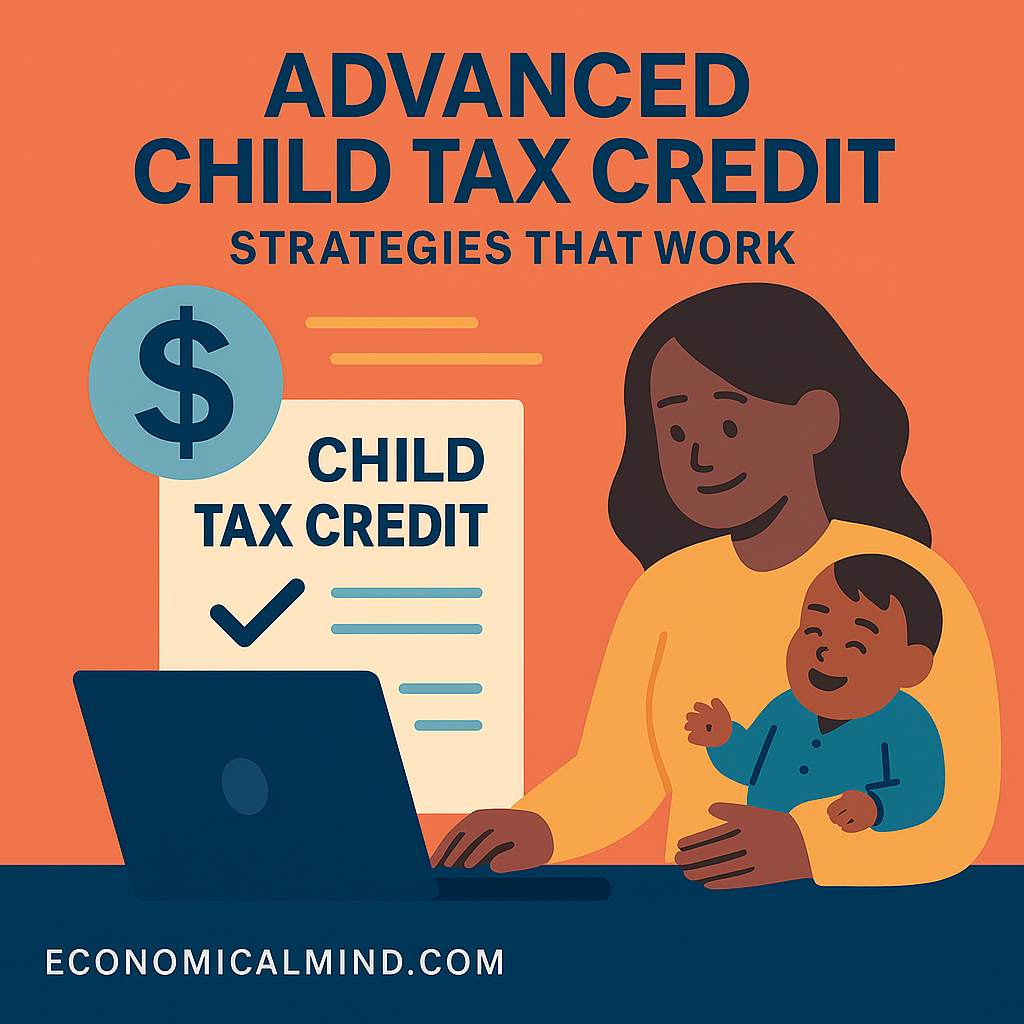
The Child Tax Credit (CTC) is one of the most powerful tools available for reducing your overall tax burden and supporting families with dependents. While many people claim it each year without much thought, there are strategic ways to maximize the credit — especially for those balancing income thresholds, multiple dependents, or other tax credits.
This article breaks down advanced strategies for making the most of the Child Tax Credit, whether you’re planning for the 2025 tax season or simply aiming to improve your overall financial picture.
Understanding the Child Tax Credit
The Child Tax Credit offers eligible taxpayers a reduction in their tax liability based on the number of qualifying dependents under age 17. The credit amount, income limits, and refundability vary year to year based on legislation.
For 2025, the CTC remains partially refundable and continues to phase out at higher income levels. Understanding those limits — and how your adjusted gross income (AGI) affects eligibility — is the first step to optimizing the credit.
1. Optimize Your Adjusted Gross Income (AGI)
Your AGI determines whether you qualify for the full or partial credit. If your income is approaching the phaseout range, consider tax-advantaged adjustments such as:
- Contributing to a traditional IRA or 401(k) to lower taxable income.
- Using Health Savings Accounts (HSAs) to reduce AGI while maintaining valuable coverage.
- Deferring income if you’re self-employed and have flexibility on when payments are received.
Small shifts in income can result in significant tax savings if they keep you within the full credit range.
2. Coordinate With Other Tax Credits
The CTC often overlaps with other family-based credits such as the Earned Income Tax Credit (EITC) or the Child and Dependent Care Credit. Strategic coordination can ensure you’re not missing benefits.
For example:
- If you qualify for both the EITC and CTC, timing your filing and ensuring accurate income reporting can help you capture both benefits fully.
- Parents paying for childcare may be able to combine the CTC with the Dependent Care Credit when managed correctly.
A tax professional or a detailed software calculator can help model these scenarios before filing.
3. Plan for Phaseout Thresholds
The Child Tax Credit phases out at specific income levels. For 2025, the threshold begins at $200,000 for single filers and $400,000 for married couples filing jointly. If you anticipate going above these limits:
- Review withholding adjustments mid-year.
- Consider shifting deductible expenses into the current tax year.
- Explore flexible spending accounts (FSAs) and pre-tax benefits offered by employers.
Strategic timing can help you remain below the income cliff where the credit begins to decrease.
4. Review for Refundability and Additional Credits
Some taxpayers qualify for the Additional Child Tax Credit (ACTC), which allows a portion of the credit to be refundable even if your tax liability is zero. This is especially important for lower-income households or families with several dependents.
To maximize refundability:
- Ensure dependents have valid Social Security Numbers.
- Double-check earned income reporting to avoid disqualification.
- File electronically to expedite refund processing.
5. Use Reliable Tools and Tax Software
Advanced filers and families with multiple credits should use reliable tools and apps that simplify tracking and filing:
- TurboTax or H&R Block for guided credit calculations.
- TaxSlayer or FreeTaxUSA for affordable do-it-yourself filing.
- IRS Interactive Tax Assistant (ITA) to verify eligibility in advance.
These platforms automatically test your income against phaseout thresholds and help identify overlooked credits.
Key Takeaway
The Child Tax Credit can be far more valuable when approached strategically. By managing your income, coordinating credits, and leveraging digital tax tools, you can unlock its full potential. Whether you’re planning for a new child, adjusting to income changes, or filing early, proactive preparation ensures you claim every dollar you deserve.
